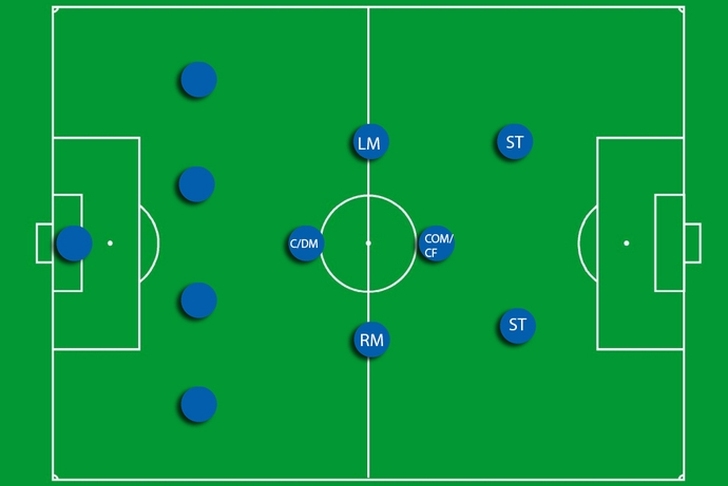There are 11 players on the field per team during a soccer game. Each team has 10 field players and a goalkeeper.
Formations are identified with the number of defenders, midfielders and forwards. Goalkeepers are understood positions and aren't included in the formation.
Depending on the coach's style of play, there are several different formations that could be used for the spacing of players on the field. Formations can change from game to game, or can even change during the run of play.
For example, if a team is winning 1-0 with less than ten minutes left of a World Cup match, the coach may tell the team to switch to a more defensive formation by dropping a midfielder back or substituting a forward or midfielder for another defender.
The formation 4-4-2, one of the most common, means there are four defenders, four midfielders and two forwards. Other formations include 4-5-1 and 4-3-3. Soccer is a creative game and there are several formation combinations coaches use.
Jurgen Klinsmann, head coach for the U.S. Men's National Team, typically uses a 4-4-2 formation with a diamond in the midfield. This means there are left and right midfielders with an offensive central midfielder and a defensive central midfielder. This formation will most likely be used during the World Cup, although nothing is set in stone.
With all the fanfare around the 2014 World Cup, we’re answering all the questions soccer initiates might have about the world’s most-watched sporting event. Make sure to check out our Ultimate World Cup Guide for the complete FAQ!
Back to the Soccer Newsfeed